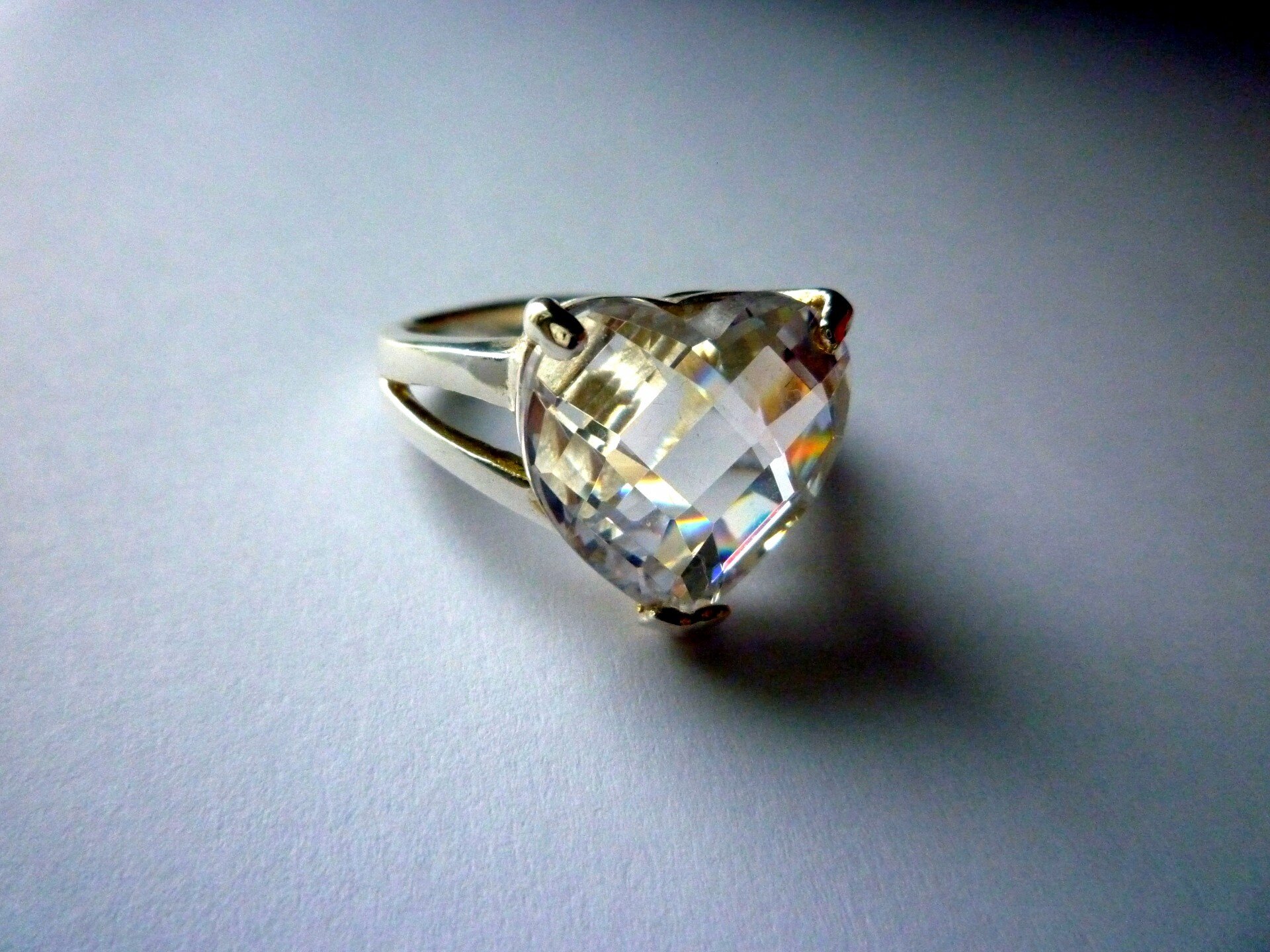What is a Cubic Zirconia?
What is a Cubic Zirconia?
Most people looking for an Engagement Ring have had at least a passing thought about a Cubic Zirconia, as they are a known alternative to Diamonds. At some point in your life, you will either get a piece of jewelry that features one, or worst-case scenario, get scammed into thinking one is a diamond. While the latter's chances are extremely remote, knowing what a Cubic Zirconia is should be mandatory before purchasing an engagement ring.
Follow along as we detail how a Cubic Zirconia is made, why they are used as a Diamond substitute, and how to spot them easily.
How is a Cubic Zirconia made?
Cubic Zirconias have been commercially available since 1976. The product is an artificial cubic crystalline formed by synthesizing zirconium oxide powders stabilized with calcium and magnesium. While the process is quite complicated and beyond the technical aspects of most, know that it requires a very high temperature of over 3000 degrees. The process results in a colorless crystalline fusion. However, a variety of colors can be achieved by doping the mixture with various elements, yielding results from yellow to purple.
While it was discovered over 100 years ago in the late 1800s, it wasn't until the 1970's that a stable single crystal could be produced effectively. Worldwide, tons of Cubic Zirconias are made every year, with the vast majority of them utilized for the mass-produced jewelry marketplace by Swarovski.
Due to the large consumption of Cubic Zirconias, innovations have continued to make them more diamond-like. The addition of diamond-like carbon coatings has given Cubic Zirconias external characteristics that more closely match a Diamond. Additionally, other methods add minute Gold or oxide coating that can provide an iridescent effect.
What is the Value of a Cubic Zirconia?
For all intents and purposes, a Cubic Zirconia is worth next to nothing. That doesn't mean that they are worthless, though. As anyone who has ever seen a Swarovski crystal can attest, a Cubic Zirconia can be used to make a beautiful, eye-catching, and affordable piece of jewelry or art. But, when used for an Engagement Ring, they are worthless. Diamonds can cost $5,000 a carat and up, and a Cubic Zirconia probably wouldn't fetch more than $20 a carat.
Recall that a Diamond should never be viewed as an investment. However, while it will be worth less than what you paid for it, it will be worth something. A Cubic Zirconia, on the other hand, instantly loses the vast majority of its value, making it an even worse investment proposition.
Differences between a Cubic Zirconia and a Diamond
There are numerous physical characteristics that differentiate Diamonds from Cubic Zirconias. Some of these are easy to spot, even with the naked eye, while others are more difficult but still somewhat obvious to a seasoned jeweler.
Hardness: One of a Diamond's most unique characteristics is its incredible hardness. Hardness is rated on a Mohs hardness scale, which we've mentioned before when comparing mounting materials. A Diamond is essentially the hardest thing you can find, with a rating of 10. This makes it highly suitable for jewelry as it can stand the various impacts and abrasions that our hands go through. A Cubic Zirconia ranks below this with a rating of 8. While still reasonably durable, over time, a Cubic Zirconia will begin to show some wear. Its sharp edges can become worn and rounded, while the exterior and Table can become scratched or cloudy.
Refraction & Dispersion: A Cubic Zirconia has a refractive index—between 2.15 – 2.18, compared with 2.42 for diamonds. This means that the light entering the Cubic Zirconia will pass through it more easily than a Diamond. The effect of this is that a Cubic Zirconia will have diminished fire and brilliance, as less of the light entering will be reflected back to the wearer. The net effect is a dull and unimpressive piece compared to a Diamond. Additionally, a Cubic Zirconia will disperse a greater degree of light than a Diamond, giving off a rainbow-like effect. A clear and easy indication of a Cubic Zirconia.
Weight & Density: A Cubic Zirconia is about 1.7 times denser and heavier than a Diamond. As such, when comparing pieces of equal sizes, the Cubic Zirconia will weigh more.
Color: As stated above, a Cubic Zirconia's natural state is that of being nearly colorless. So much so that a Diamond of only the highest Color could ever achieve, and such a perfect Diamond is almost impossible to find. As such, a Cubic Zirconia will more often than not look "too good."
How to Identify a Cubic Zirconia?
When reviewing the list of items identifying the differences between a Diamond and a Cubic Zirconia, you'll notice there are several areas where a Cubic Zirconia looks too good. This perfect look gives it an almost plastic appearance, making it easily identifiable. Worst case scenario, there are several simple tests a jeweler can conduct to identify a Cubic Zirconia. However, if you have any doubts, make sure you purchase your Engagement Ring from a reputable seller. All our preferred sellers have an impeccable reputation and stand behind their Diamonds, leaving you with zero reasons to worry.
LOOKING FOR AN ENGAGEMENT RING?
Worried you'll end up falling for a Cubic Zirconia when searching for your engagement ring? Let us help you navigate the 4-C's and all the nuances that make buying an engagement ring daunting. Contact us, and we will walk you through all the nuances that make buying an engagement ring daunting with our one-on-one help.





